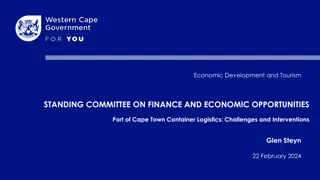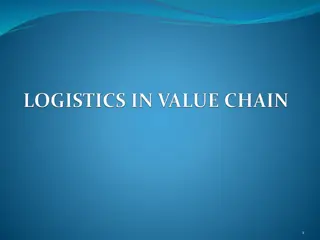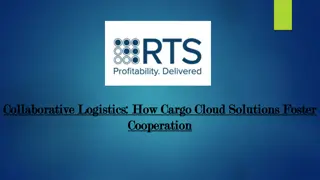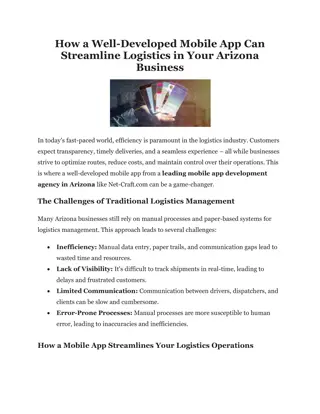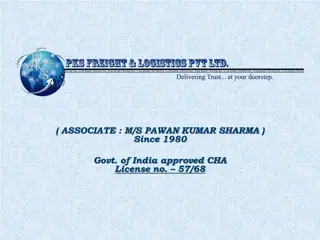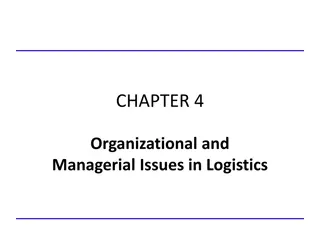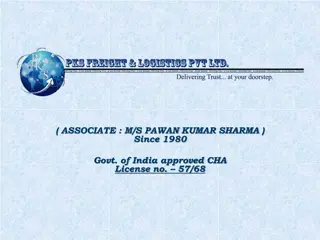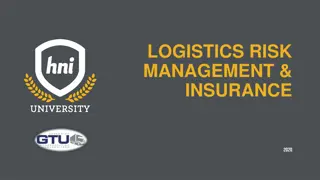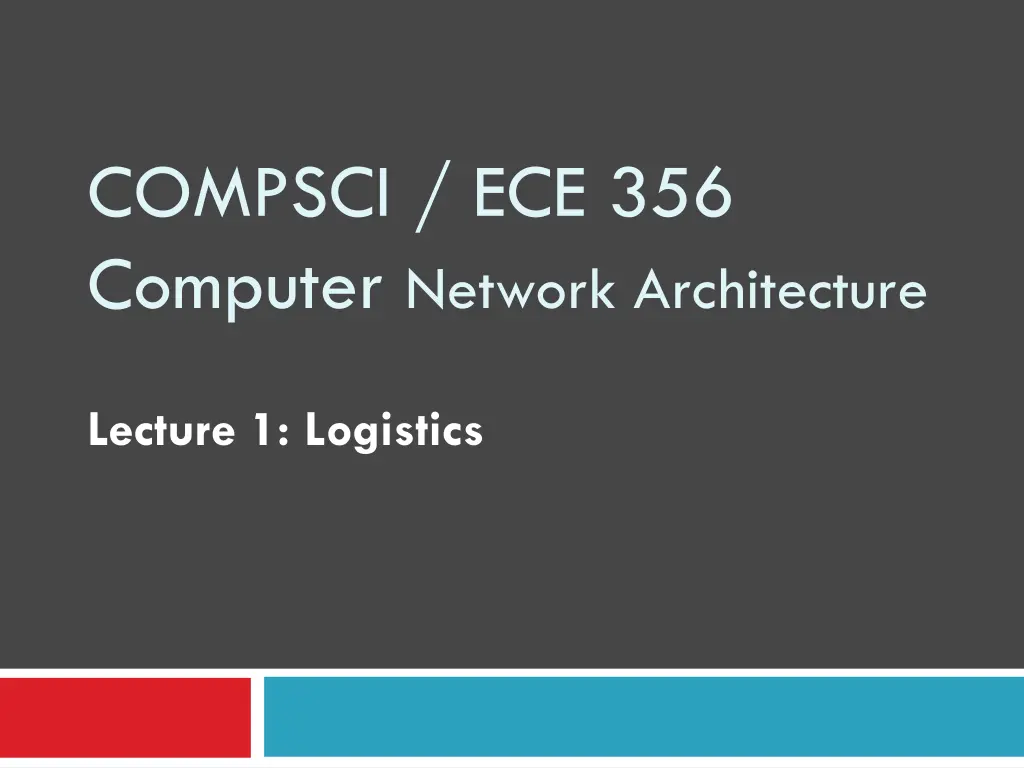
Computer Network Architecture Overview
Join Professor Bruce Maggs for COMPSCI/ECE 356 Computer Network Architecture, covering logistics, TA information, the professor's background, course goals, and online resources. Explore the importance of networks in daily life, the course structure focusing on software and protocols, and key online resources for the class.
Download Presentation

Please find below an Image/Link to download the presentation.
The content on the website is provided AS IS for your information and personal use only. It may not be sold, licensed, or shared on other websites without obtaining consent from the author. If you encounter any issues during the download, it is possible that the publisher has removed the file from their server.
You are allowed to download the files provided on this website for personal or commercial use, subject to the condition that they are used lawfully. All files are the property of their respective owners.
The content on the website is provided AS IS for your information and personal use only. It may not be sold, licensed, or shared on other websites without obtaining consent from the author.
E N D
Presentation Transcript
COMPSCI / ECE 356 Computer Network Architecture Lecture 1: Logistics
Hello! 2 Who am I? Professor Bruce Maggs bmm@cs.duke.edu LSRC D324 Office Hours: 3pm-4pm Tuesdays (LSRC D324) Or by appointment (send email)
Your TAs 3 TAs Samuel Chou, office hours Friday 10:35am-12:35pm Jinyu Pei, office hours Thursday 2:30pm-4:30pm UTAs Aruj Bansal
A little bit about myself 4 My grandfather was a professor at Duke (Law) I grew up in Urbana, Illinois, but as a boy also lived in Bulgaria, Yugoslavia, Romania, Hawaii, and the Soviet Union I taught myself how to program (games!) on the PLATO computer system I went to college and graduate school at MIT Before joining Duke I spent 15 years at Carnegie Mellon I was a founding employee and first head of engineering at Akamai Technologies I just came back from five years at a start-up called Emerald Innovations I am an avid windsurfer!
Why take this course? 5 Networks enable many of our daily activities! Web search Social networking Watching movies Ordering merchandise Wasting time Networking is one of the three pillars of computing Processing Storage Communication
Goals 6 Fundamental understanding about computer networks All the way from bits on a wire across the ever-evolving Internet to distributed applications Focus on software and protocols Not hardware Minimal theory Project-centric, hands-on experience Programming APIs Network Simulation Application-level protocols Globally distributed systems
Online Resources 7 Web site https://courses.cs.duke.edu/spring25/compsci356/ Class forum is Ed https://edstem.org/us/courses/70437/discussion When in doubt, post to Ed If you e-mail me a question, I will tell you to post it on Ed Assignments released on Canvas https://canvas.duke.edu/courses/46673 Assignments handed in via Gradescope https://www.gradescope.com/courses/934223 Textbook: Computer Networks: A Systems Approach https://book.systemsapproach.org/
Misnomer 8 Computer Network Architecture It s true, we ll cover architecture But we re going to cover much more! Perspective Networking fundamentals are essential for working in a networked world However, what you do with the network is far more interesting than the network itself
Projects 9 This course is project-centric Designed to give you real networking experience Start early! Seriously, start early! 5 projects Use turn-in scripts to submit your code, documentation, etc. Working code is paramount
Final Grades 10 At the end of the semester, all of your grades will sum to 100 points Written assignments: 10 Projects: 45 Midterm: 15 Final Exam: 30 Final grades are based on a simple scale: A >92, A- 90-92, B+ 87-89, B 83-86, B- 80-82, Grades might be adjusted up, but not down

